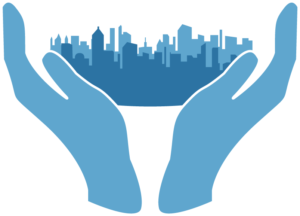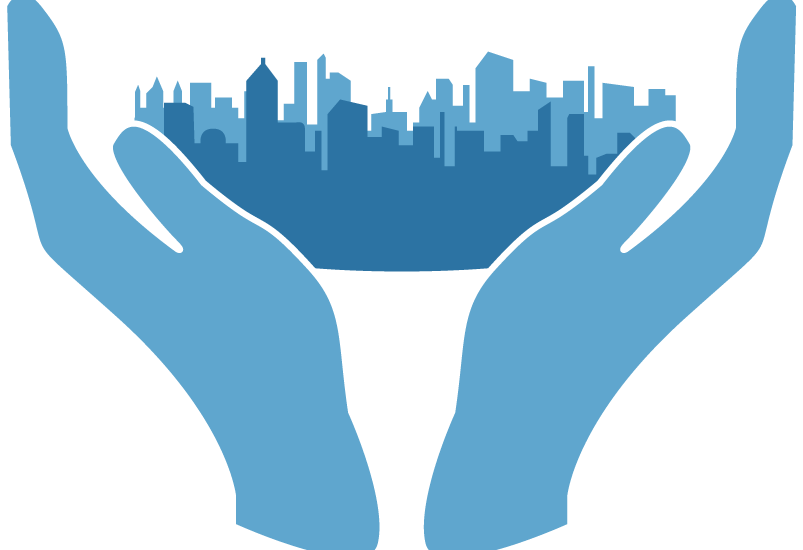The Design
Imagine you’re looking for a way to give back to your community through volunteer work, but you’re unsure where to go. You try Googling places to volunteer, but what websites you do find have very little to offer. How can you take this energy and put it towards helping your own local community? How can you even find the local volunteer opportunities that you know must exist?

Enter HandsOn, the new matchmaking app focused on connecting local organizations and foundations with willing volunteers. Users simply sign up, answer a short questionnaire about their values, availability, and skill level, and are presented with nearby places currently looking for volunteers. Organizations looking for volunteers need to provide adequate proof that they are who they say they are and that they’re eligible to request volunteers, the proof of which varies based on the kind of organization. Using this tool, individuals can feel empowered to help make direct, meaningful contributions to their local communities, while also connecting with others.

Decisionmaking
The express goal of HandsOn is to empower potential volunteers in the decisionmaking process; people who want to take action and do work in their community are given the tools necessary to find organizations with values they believe in to volunteer at. Social media as a whole works specifically to inhibit users’ ability to make decision; by prioritizing user interaction for advertisement purposes, they work to trap users in an endless cycle of consuming emotionally manipulative media. This focus on the content, on keeping a captive audience, leaves that audience with no way of expressing those emotions in a healthy, constructive way.
HandsOn works the opposite way, encouraging users to take those emotions and do something constructive with them. While the app does have users fill in a survey to tailor opportunities to their specific beliefs and availability, HandsOn makes it easy to change the answers to that survey at any time. It also lets users easily find opportunities that fall outside the survey’s results, giving the user full agency over how they search for places to volunteer.
Other Design Criteria
HandsOn respects the user’s attention by allowing them to completely customize the types of notifications they receive. Many apps in general will send daily notifications to users who haven’t interacted with that app in a while, and those types of notifications often end up competing with each other for attention. HandsOn doesn’t have these notifications at all, ensuring it only takes up your attention when something occurs that’s important to you. You can choose to be notified only when organizers you’ve shown interest in message you for a volunteering opportunity, or you can choose to be notified when there’s a new opportunity that matches your needs and interests. Or you can completely disable notifications and only interact with the app on your own accord. The decision is completely up to the user.
While users do have their own profiles, and users who participate in the same organization can connect to each other through the app, HandsOn doesn’t encourage social hierarchy present in other social media. Friend count isn’t a useful metric, and isn’t visible to anyone. All you can see on your own profile are your own connections and a list of your volunteer work found through the app. All you can see on others’ profiles are their own recent volunteering. The user profiles do not serve as a popularity contest, they serve solely to connect like-minded people who have already had the chance to meet in person.
The whole purpose of HandsOn is to connect individuals to much larger groups of organizers and volunteers, and simply participating in this app enables people to become a part of a group. When people are able to cooperate and do valuable work with others like them, they’re more to feel a sense of belonging by the end of it. While HandsOn specifically focuses on improving decisionmaking among users, its design also inherently benefits group dynamics, and the ability for people to find their groups.
Supportive Context
I imagine this type of app could easily exist in the current world as it exists now. There are already multiple online databases focused on connecting volunteers with organizations, such as VolunteerMatch, mentioned briefly earlier. The biggest hurdle to this idea as it currently exists is the fact that so many local groups looking for volunteers don’t necessarily have a web presence to speak of. While VolunteerMatch only showed 45 results in the Orono area, there are likely many more opportunities from people who just don’t have the resources to do this level of community outreach. Another issue to this idea is the fact that some volunteer places have more rigorous requirements for volunteers than just simply being there. To become a support volunteer for the Humane Society, for instance, requires you to fill out a specific application and pass a background check. While I could probably find a way to incorporate background checks into the app, and organizations can certainly advertise their need for more complex opportunities, that does take away from the initial idea of an instant connection between organizers and volunteers.
Probably the only change to the world that would make this idea more successful is making nonprofit organizations more common, so there are more opportunities for people to volunteer.
Weigh Costs
The biggest cost a program like this would create is the amount of energy needed to keep it running. Housing all the data this app would require would take a lot of server space, especially if it’s used on a national or even global level. However, I think that cost is somewhat justified by the good it would bring into the world. People using HandsOn are explicitly doing so to better their community, and I imagine some of that would include environmental projects. Overall, I think it would be a net positive on the world at large.
Again, a design like this is explicitly made to improve the local community. By making it a smartphone, it has a wide accessibility, and specifically is accessible to the people who would be most likely to have the time and energy to want to volunteer in the first place. It also could be used in ways to benefit those who don’t even use it, depending on what organizations choose to recruit through it.

You must be logged in to post a comment.